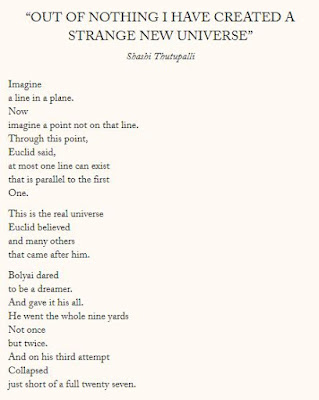 |
| Page 1 of 3 -- the entire poem is found here at VisualVerse.org. |
Also in Visual Verse is Thutupalli's "Dimensional Reduction' -- at this link.
Mathematical language can heighten the imagery of a poem; mathematical structure can deepen its effect. Feast here on an international menu of poems made rich by mathematical ingredients . . . . . . . gathered by JoAnne Growney. To receive email notifications of new postings, contact JoAnne at joannegrowney@gmail.com.
 |
| Page 1 of 3 -- the entire poem is found here at VisualVerse.org. |
